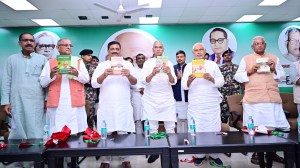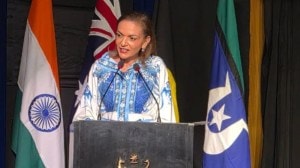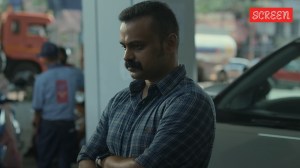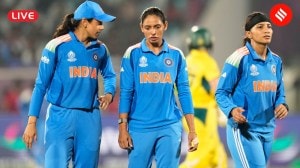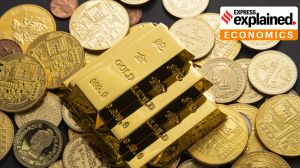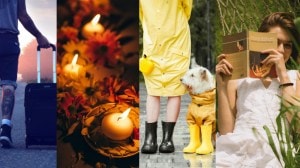The surprising Bengali connection of a Braj sweet shop in Delhi’s Kamla Nagar
Lala Ram Prasad, the founder of Shri Banke Bihari Brijwasi Rasgulle Waale, trained at the legendary KC Das in Kolkata.
 In picture, Rajiv Brijwasi (centre) with brother Amit (right). (Photo: Surbhi Gupta)
In picture, Rajiv Brijwasi (centre) with brother Amit (right). (Photo: Surbhi Gupta)
The year was 1954. Lala Ram Prasad ventured out of his hometown of Vrindavan, the holy city known for its temples to Hindu god Krishna and Radha, and one of the key places in the Braj circuit in Uttar Pradesh. He was following his ancestors, who prepared the prasad at the popular Shree Rangnath Ji Temple, and was involved in making sweets at the Banke Bihari Temple. “But he wanted to hone his skills further and came to Delhi, and then someone suggested that he should go to Calcutta, which is famous for milk-based sweets,” says Rajiv Brijwasi, Ram Prasad’s grandson and third-generation owner of Shri Banke Bihari Brijwasi Rasgulle Waale in north Delhi’s Kamla Nagar.
In Kolkata, Ram Prasad found a job at the city’s famous confectioner KC Das’s shop and worked for two years, learning how to make chhena from scratch. In 1956, he returned to Delhi and started serving rasgulla, rasmalai, rajbhog and gulab jamun at a stall he set up in front of the Khadi Bhandar store in Kamla Nagar market. A year later, with his son Lala Shyam Lal, Ram Prasad bought a space in the locality’s block D, where they made the sweets which were sold at the stall.
“At that time, Kamla Nagar didn’t have as big a market as it has now. There were only five-six shops and there weren’t as many residents. But students from Delhi University’s North Campus would throng the stall,” says Brijwasi, 42, who manages the shop with his younger brothers Amit, 38, and Rohit, 35. “Our grandfather was illiterate and didn’t know how to calculate. At that time, a rasgulla was sold for four annas. The customers used to calculate and give the money themselves. Our father told us how in the evenings when they evaluated the day’s sale, they had an anna or two extra. That’s how gracious the customers were,” he says. In 1962, they closed the stall and started sitting at the shop.
Shyam Lal died in 1990, so the boys were raised by their grandfather, who died in 2002. “We don’t have any workers, our family members prepare and serve the dishes at the shop,” says Brijwasi. Over 1,500 litres cow milk that is used daily comes from UP’s Baghpat.
 In photo, lachha paratha, khoya matar paneer and Vrindavani. (Photo: Surbhi Gupta)
In photo, lachha paratha, khoya matar paneer and Vrindavani. (Photo: Surbhi Gupta)
Eventually, they also started serving breakfast of aloo-bedmi puri, aloo-kachori and lassi, and dishes made without onion and garlic such as khoya matar paneer, shahi paneer, palak paneer, aloo gobhi, rajma, dal makhani, chana masala, braj besan gatta, and Vrindavani — which is otherwise known as kadi pakora that’s made of dahi. “We, however, make it with chenne ka pani and milk cream. In our food, we don’t use red or green chillies, using only pepper, cloves, cinnamon, bay leaf and asafoetida. For naan and parathas, we knead the flour in cow milk,” he says. In summer, they serve lauki ka achar and in winter, gajar-shalgam ka achar. Also popular are snacks like aloo ka bhalla topped with matra ki chaat, cheela and samosa. In summer, you can beat the heat with chak doodh, infused with saffron, pistachios, almond, rose water and served in bottles, and in winter, try the kadhai doodh, prepared daily from 5-11 pm.
If Holi saw gujiya, balushahi, chandrakala and thandai flying off the counter, pheni and kadhai ghewar (a one-piece ghewar, weighing four-five kg and cut into pieces) are made during Raksha Bandhan, and maakhan misri and rabri kuliya during Janmashtami.
Construction behind the shop is in full swing as the brothers plan to expand and open a restaurant to serve more recipes and dishes from the Braj region. “The kacchi thali will have kale angoor ki sabzi, braj besan katli, doodh bhaat, arhar dal, moong dal, gwar ki phali, kathal, arbi, rasili matar paneer in a cashew and makhana gravy, among others,” he says.



- 01
- 02
- 03
- 04
- 05








